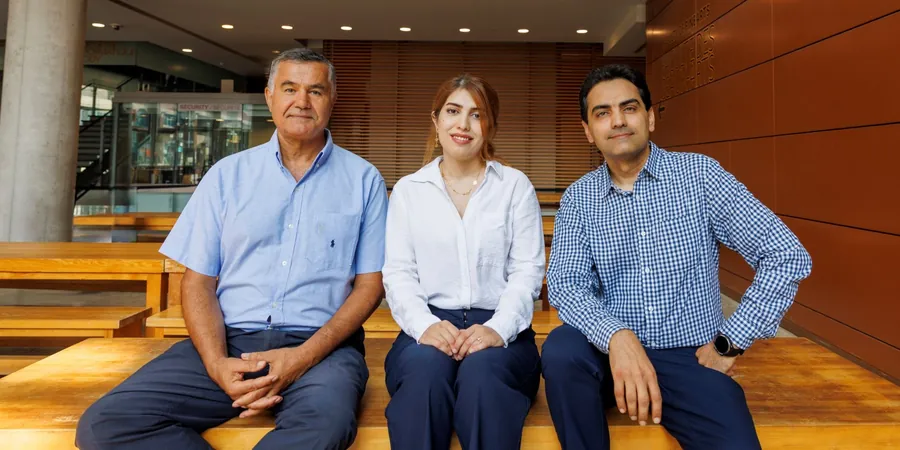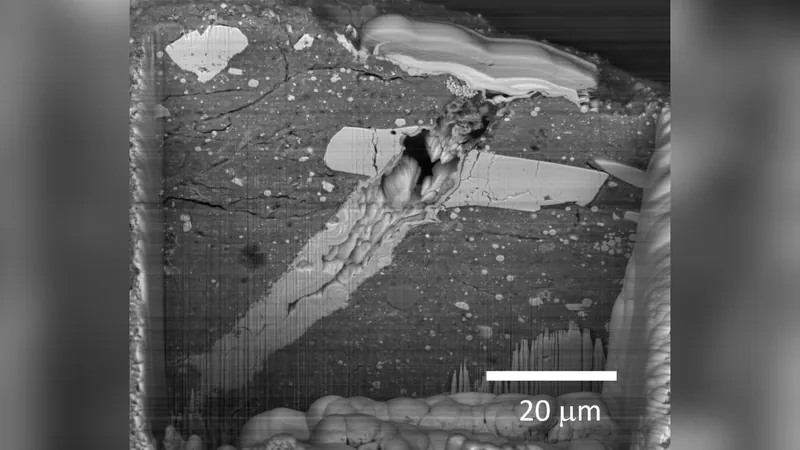
Breakthrough in Indoor Disease Tracking: Concordia Researchers Unveil Rapid Method
2025-08-26
Author: Liam
In a groundbreaking development, researchers from Concordia University have introduced a revolutionary method for tracking how infectious diseases spread indoors. This innovative tool has the potential to effectively contain future outbreaks of illnesses, such as COVID-19.
Featured in the journal *Building and Environment*, this cutting-edge approach utilizes real-time camera and sensor technology to monitor infected individuals. Coupled with sophisticated algorithms that model air and pathogen dispersion, the system can accurately assess risk levels of infection. Remarkably, it can even alert ventilation systems to optimize airflow, significantly lowering the chance of spreading infections.
A Game-Changer in Disease Tracking
Lead author Zeinab Deldoost, a PhD candidate, emphasizes the efficiency of their method, stating, “Our novel approach drastically cuts down simulation time compared to existing studies. It provides a clearer picture of whether an exposed location continues to harbor infection risk.” Unlike traditional models that only analyze short bursts of airborne transmission, this new technique can simulate pathogen spread over extended periods.
Co-author Fariborz Haghighat, a professor in Concordia's Department of Building, Civil and Environmental Engineering, adds further insight: “Recognizing a person's illness allows our system to track their movements and determine how far pathogens disperse around them.
Revolutionary Airflow Calculations
The true strength of this model lies in its simplified airflow calculations. Rather than focusing on how an individual's movement alters airflow patterns, it models the person as a moving, massless emission source. This innovative strategy provides a reliable measure of airflow and effectively examines pathogen dispersion from this dynamic source.
The team validated their model by demonstrating that a person's presence only minimally disrupts airflow. After an individual exits a space, airflow returns to its normal state within about 40 seconds, with pathogen movement largely contained to just a meter surrounding their path.
This advanced system can simulate one second of pathogen dispersion in merely 3.8 seconds on a standard laptop, making it incredibly efficient.
Implications for Dynamic Environments
The researchers believe their method is particularly suited for complex environments like hospitals, where occupancy can change rapidly. This capability empowers decision-makers to make informed, near-real-time decisions to mitigate risks.
Fuzhan Nasiri, another co-author and professor, envisions future applications of this technology: “By implementing our simulation over various scenarios, we could amass enough data to identify distinct movement and dispersion patterns. This dataset could eventually train AI systems, alleviating the need for comprehensive simulations to reach the same conclusions.”
Support for this pioneering research was bolstered by a grant from the Natural Sciences and Engineering Research Council of Canada, highlighting the project's significance in the ongoing fight against infectious diseases.









 Brasil (PT)
Brasil (PT)
 Canada (EN)
Canada (EN)
 Chile (ES)
Chile (ES)
 Česko (CS)
Česko (CS)
 대한민국 (KO)
대한민국 (KO)
 España (ES)
España (ES)
 France (FR)
France (FR)
 Hong Kong (EN)
Hong Kong (EN)
 Italia (IT)
Italia (IT)
 日本 (JA)
日本 (JA)
 Magyarország (HU)
Magyarország (HU)
 Norge (NO)
Norge (NO)
 Polska (PL)
Polska (PL)
 Schweiz (DE)
Schweiz (DE)
 Singapore (EN)
Singapore (EN)
 Sverige (SV)
Sverige (SV)
 Suomi (FI)
Suomi (FI)
 Türkiye (TR)
Türkiye (TR)
 الإمارات العربية المتحدة (AR)
الإمارات العربية المتحدة (AR)